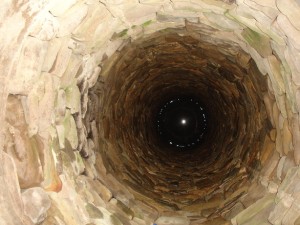Brief Guide to the Toxins Found In Your Well Water
Many homes in the United States are supplied with well water. Unfortunately, since the water enters your home without treatment from a municipal facility, this does mean that it you and your family can be very vulnerable to toxins and contaminants.
Although the EPA regulates the levels of contaminants permissible in municipal supplies, it is the responsibility of the property owner to ensure that well water is safe to drink. Therefore, it is important to understand how outside forces can infiltrate your well water supply, introducing potentially harmful contaminants and toxins. This will allow you to properly monitor your well and reduce the risk of your family drinking contaminated and potentially harmful water.
How Toxins are Introduced:
There are literally thousands of varieties of potentially dangerous microorganisms and organic and inorganic toxins which can enter into your well water supply through the soil. From chemicals and disinfectants to agricultural products and industry debris, many of these toxins can be absorbed into the soil and runoff into well water. The sources of different toxins include animal waste, petroleum refinery discharge, runoff from agriculture, waste from drilling, paint or corrosion from pipes and plumbing systems.
In many cases of contamination, the toxins enter the well water as a direct result of the homeowner or their neighbors. The very nature of a well, as an area of the ground which draws in water for accumulation, means that it lends itself to potential contamination. This means that if you or any of your neighbors are using herbicides, pesticides or any other toxic materials, it is likely to enter your drinking water. Additionally, if there is even the smallest crack in a septic tank nearby, it will allow pathogenic organisms to infiltrate your well water supply.
What You Can Do to Ensure Your Water is Safe?
Since many potentially harmful toxins do not alter the appearance or taste of your water, it is important that you ensure that your well water is tested regularly. According to the CDC, property owners should have their well water tested at least once a year. It is also recommended that your well water should be tested if there are known problems in your area or there have been issues near your well, such as land disturbances, flooding or nearby industry and waste disposal. You should also test the water if you repair or replace any component of your well system. Of course, if you notice any changes in the color, taste or odor of your drinking water, you should immediately have it tested.
Another consideration for protecting your household from potential toxins in your well water, is to install a domestic water treatment system. Many of these systems are able to eliminate toxins and contaminants from well water supplies. This includes bacteria, disease causing microorganisms, waterborne viruses or harmful elements such as lead, arsenic or nitrate. These types of systems are available as under counter devices or whole house systems, allowing you to ensure that your drinking water is clean and safe for the whole family to enjoy, without needing to resort to buying costly expensive bottled water.
About The Author:
Greg Scott is President of Valparaiso based Miracle/EcoWater Systems, the premier water conditioning company in Northwest Indiana serving the Lake, Porter and LaPorte County areas. A 3rd generation water treatment professional, Greg grew up in the family owned business started by his grandfather in the late fifties. He has made water treatment his life and under his direction and high-standards, the company’s water treatment experience, knowledge, and products are unrivaled in region.
Back to
